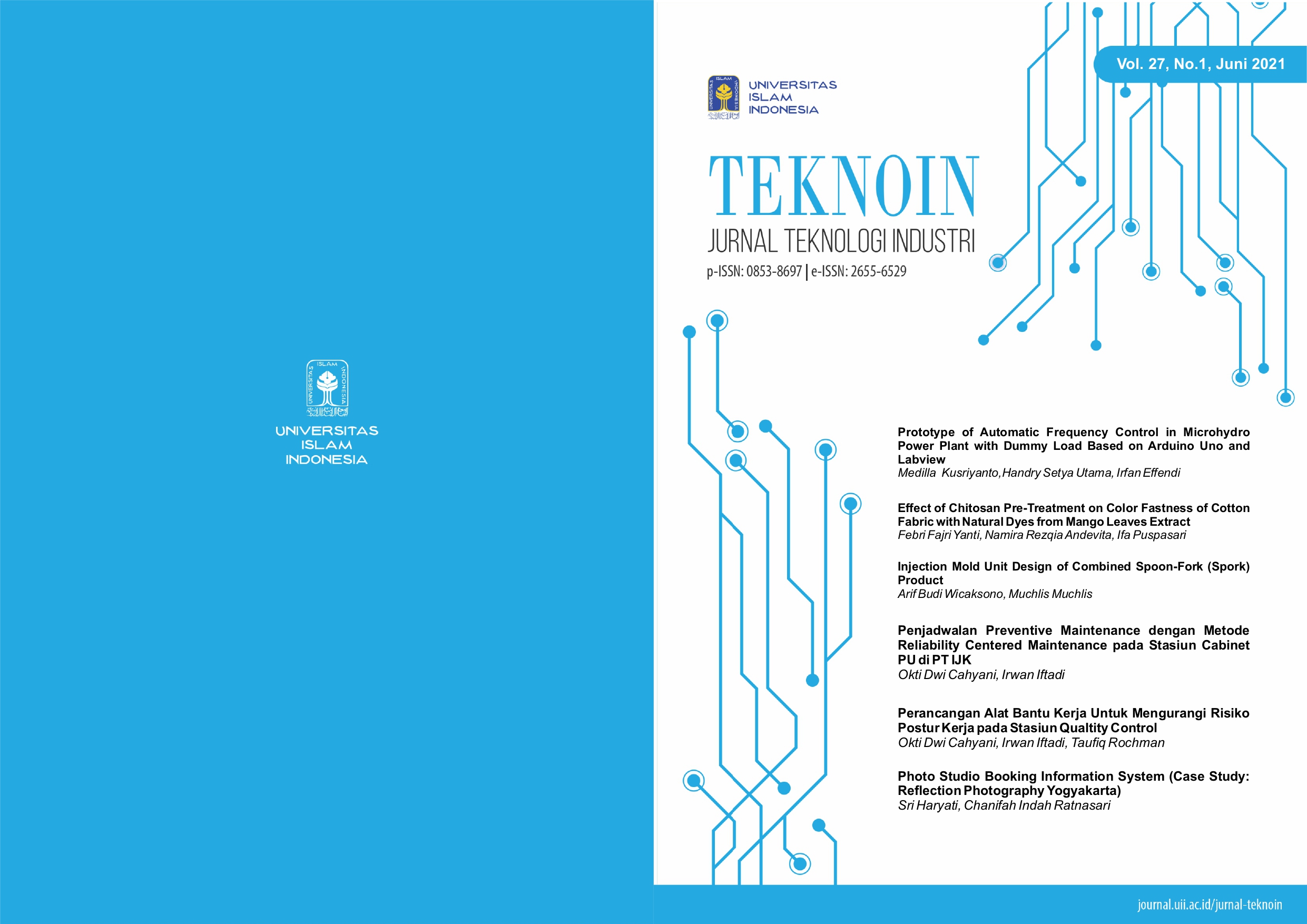Main Article Content
Abstract
Micro hydro power plants are small-scale power plants that use hydropower as their driving force. Hydropower can come from irrigation channels, rivers or natural waterfalls, which are used by utilizing the waterfall height (head) and the amount of water discharge. The main components of this plant are the turbine and generator. The load on the micro hydro generator will affect the value of the voltage and frequency generated. This research attempts to make a micro hydro generator with automatic frequency control using dummy load in the form of inductance which is obtained using variac. The generator output voltage and current will be read by Arduino as a control center using the ZMPT101B AC voltage sensor and ACS712 current sensor. The generator output frequency is read by reading the travel time of 1(one)full wave. This research is also equipped with a variable monitoring system for micro hydro generator using Labview. From the observations of the research data, it was revealed that the frequency output of the micro hydro generator with an automatic dummy load controller was close to the value of the mesh frequency, namely 51 - 52 Hz.
Keywords
Pembangkit Mikrohidro
beban semu
frekuensi
labview
Article Details
License
Authors who publish with this journal agree to the following terms:
- Authors retain copyright and grant the journal right of first publication with the work simultaneously licensed under a Creative Commons Attribution License that allows others to share the work with an acknowledgement of the work's authorship and initial publication in this journal.
- Authors are able to enter into separate, additional contractual arrangements for the non-exclusive distribution of the journal's published version of the work (e.g., post it to an institutional repository or publish it in a book), with an acknowledgement of its initial publication in this journal.
- Authors are permitted and encouraged to post their work online (e.g., in institutional repositories or on their website) prior to and during the submission process, as it can lead to productive exchanges, as well as earlier and greater citation of published work (See The Effect of Open Access).
